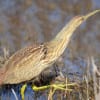 By Jim Stevenson
By Jim Stevenson
First, I am still looking for someone to “man” the GOS booth at FeatherFest Saturday afternoon, 1-5. You’ll be my best friend! Second, this Saturday we are having a terrific field trip to Bolivar Flats, High Island (spoonbill rookery) and Anahuac NWR, $45. We are going to see sooooooooo many birds! Great photography, too! 8 am at the PO on Broadway, back around 5 pm. Third, sadly, we didn’t get enough people for the circum-Gulf migration research, so we’ll try again next year. I’ll put it out there sooner. I counted Sunday morning, recording over 700 birds/hour – mostly herons, egrets and Blue-winged Teal. I also got some good pictures from the end of the 61st Street Dock. I’ll attach one. Cool, huh?
The Gallery is on many of our waterbirds and please remember the nasty, overcast weather we have been having! 🙁
Have a great week!
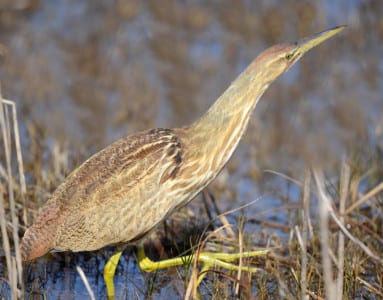
American Bitterns are winter residents, usually presence-determined by the water level.
It’s too high in many places nearby right now.
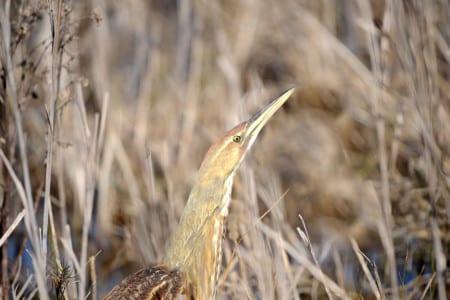
The bill tells you they are closely-related to herons and egrets, spearing their food with
dagger-like precision.
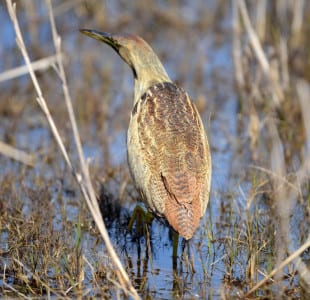
Even from behind they practice both mimicry (freezing) as well as having excellent
camouflage. Have you ever seen one you didn’t see? 😉
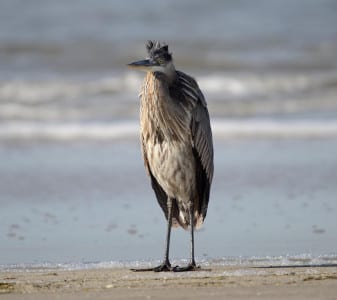
Immature Great Blue Herons lack the fine colors of the adults, but they often accompany
adults to the breeding sites.
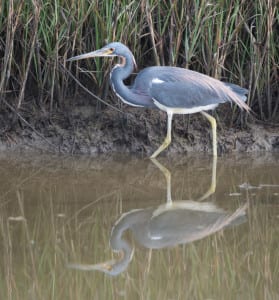
Tri-colored Herons have very long, thin bills for catching the smallest minnows. This
bird has yet to achieve its breeding colors.
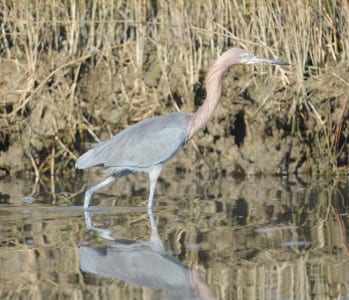
Reddish Egrets are morphing into high breeding plumage now, with flesh-colored bases
on bills and cobalt-blue legs.
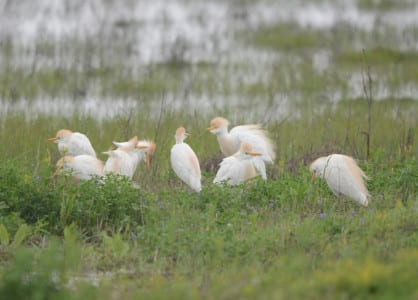
These Cattle Egrets have just arrived in North America off the Gulf and are dead tired.
Still, you can see the buffy of their breeding plumage.
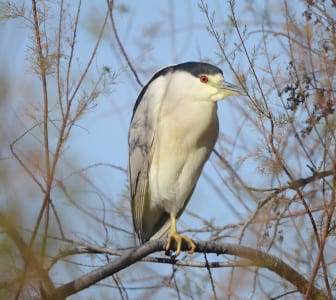
Black-crowned Night-herons have wintered here in small trees, emerging at night to feed.
Does the immature also have yellow on the bill?
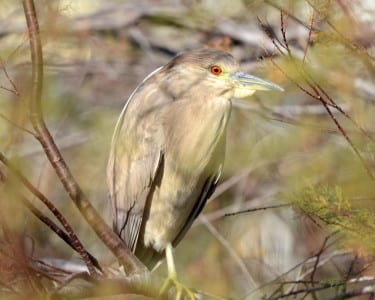
Yes, and it’s one way to tell them from young yellow-crowns. This teenager is attaining
his dark crown but still has a long way to go.
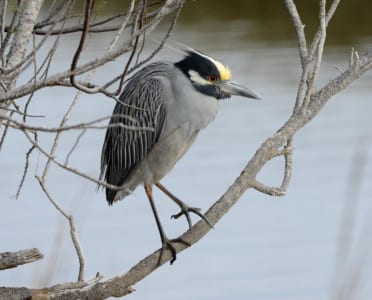
This is the smart Yellow-crowned Night-Heron adult, gray all over. They are more
commonly seen in salt marshes during the day but are now heading north, off the coast,
for tall, inland trees to nest in. Those who wintered in the Tropics will soon be seen
flying circum-Gulf as they arrive.
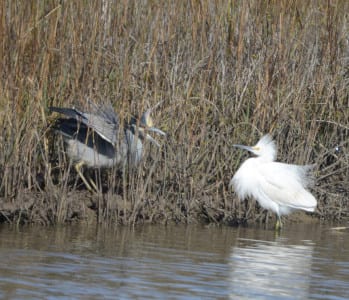
Plumes are occasionally used in aggression, as this Snowy and YCNH are having one of
those territorial disputes occasionally seen. It never amounts to much.
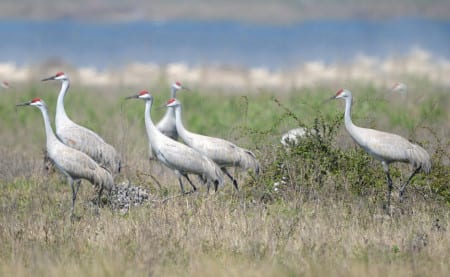
We in Galveston have to say a sad goodbye to our cranes every March, until they return
in October. This year, a few stayed until my 3/17 birthday – a great present!
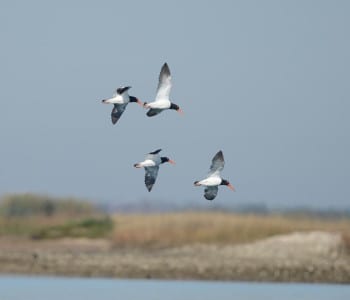
American Oystercatchers are quite common in Galveston Bay, due to the bars, but are not
seen as frequently from roads. This is actually from the CBC.
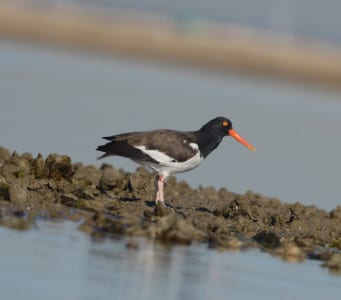
They are in a separate family from all other shorebirds, with (generally) dark&white ones
where there are beaches and black ones where it’s only rocky shores.
If you see a banded oystercatcher, try to get the number and report it to me.
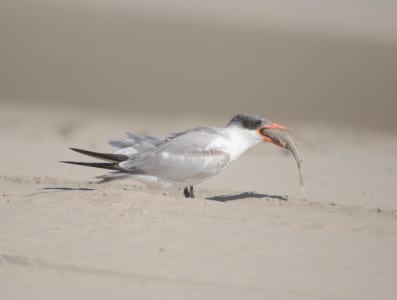
This winter plumaged Caspian Tern is showing off his large, red bill and a Sand Trout he
(somehow) can swallow. His sandy lunch musta been caught in Silicon Valley.
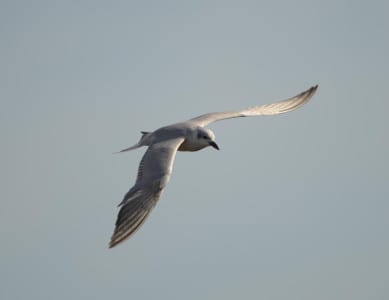
Not well known nor often seen is the winter plumage of the Gull-billed Tern, which
nearly lacks any dark pigment atop. Curiously, the wings are darker on top than most
other terns.
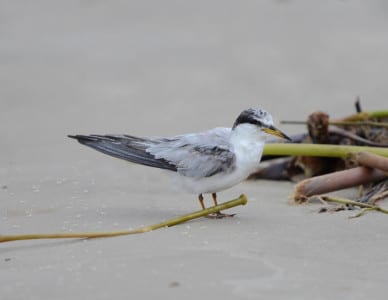
This sad-looking Least Tern re”terned” from the Tropics without its breeding colors. It’ll
be a coupla weeks and he’ ll look like his buddies who are also showing up.
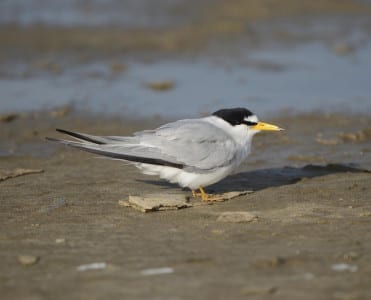
Absent since September, our hero drops down, exhausted and tame. Note the yellow bill
& legs and white forehead. Listen for their klee klee klee!
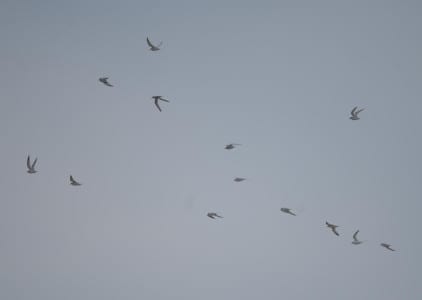
For the first time, I think I saw them flying circum-Gulf, a total of about 70 birds flying
west-to-east at San Luis Pass. I’m still learning things!
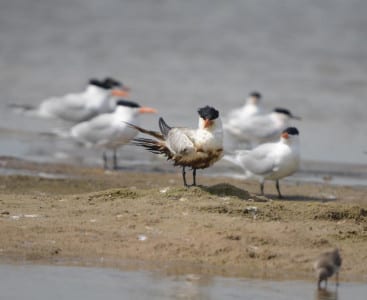
This is the first oiled bird I’ve seen from mid-Island westward, a real blessing for nearby
Brazoria County (and birders). This Royal Tern will hopefully survive if he doesn’t
ingest too much of the oil.
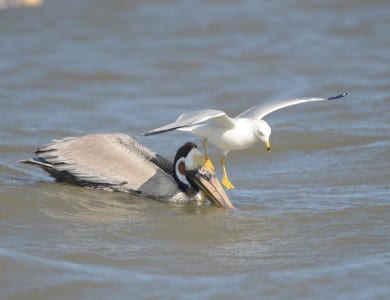
This Ring-billed Gull (breeding plumage adult) is fishing from a hapless Brown Pelican.
If I was that pelican I’d dunk that rude dog.
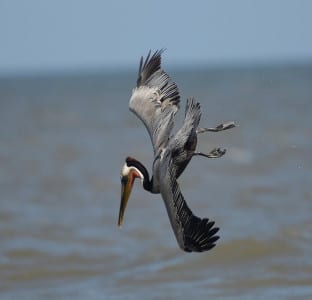
All dark pelicans of the World dive into the salt water for their fish, with this adult Brown
feeding with friends off SLP. You can even see the totipalmate feet – fully webbed.
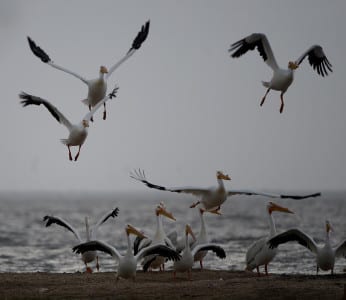
All pelicans in the World that are light feed while swimming, like these White Pelicans.
They are generally a bit larger than the dark forms, although nobody told that to the
gargantuan Chilean Pelicans!
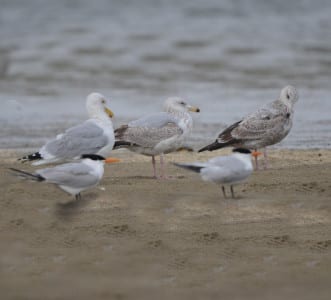
Herring Gulls are highly variable, mostly depending on their age. The immatures (right
bird) are all-brown, the last year before adulthood they are lighter and begin getting a
gray back (middle bird), and as adults, they look like the left bird. In winter, adults have
the speckling on the head and neck.
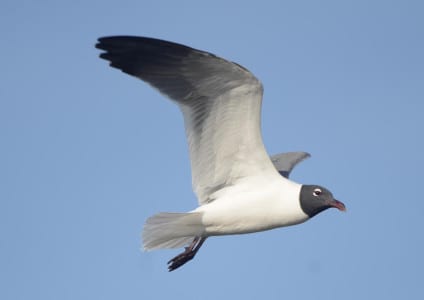
Laughing Gulls attain breeding plumage before any other species here, often in February.
But that’s just the feathers…
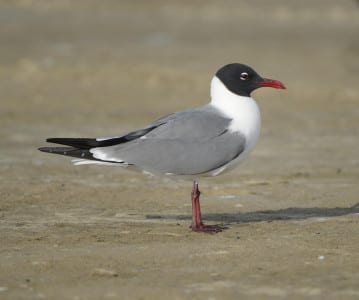
High breeding plumage includes the bill and legs getting red, and this fella is close. Boy,
there are a LOT of gulls worldwide with black heads in summer!
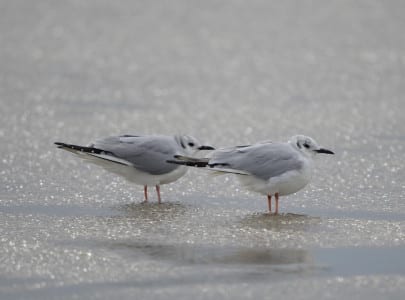
These small gulls with the dark ear muffs are Bonaparte’s Gulls, our (by far) most
common of the small gulls. Like some others, they will attain a black head in April, and
the same genes that make that happen also tell them to migrate.
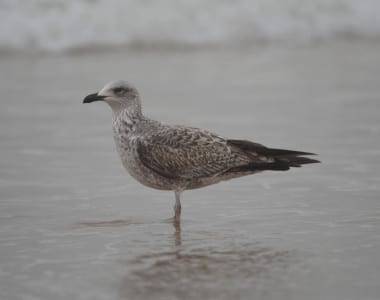
Overlooked by most is an immature Lesser Black-backed Gull, quite similar to the young
Herring. Note the black bill and small, rounded head.
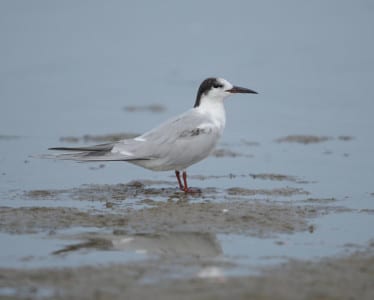
Easily lost in the Forster’s Terns is this early Common, distinguished by the black nape
and red legs. Its bill will soon turn red with a black tip, while the Forster’s bill&legs will
turn orange, and the terns’ black bill tips have dark pigment that stiffens the beak.
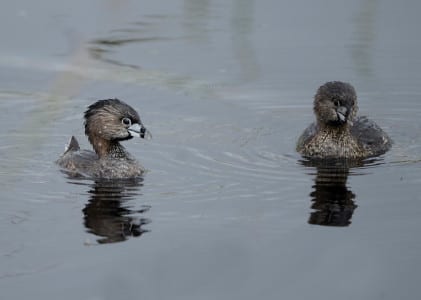
This pair of Pied-billed Grebes shows the black bar that gives them their name. They nest
on the UTC but curiously not on the Island itself.
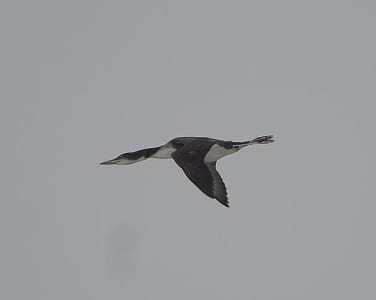
Also a very primitive group, loons fly with their head and neck outstretched. They are
large birds with extremely large feet!
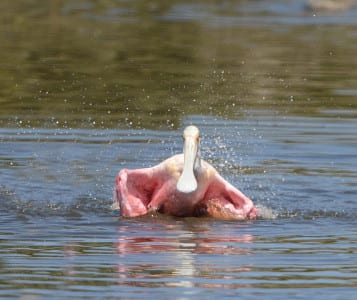
Many marine birds bathe in freshwater, and this young spoonbill is getting his money’s
worth. Currently, most adults are on site at the rookery.
Oh, a “rookery” is where they breed, and a “roost” is where birds spend the night.
K?
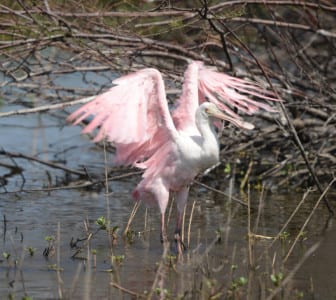
He seems quite triumphant that he’s clean and he only managed to bother every other
waterbird there for fifty meters. Those are some sorry looking primaries.
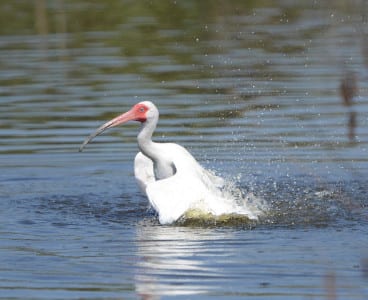
And yes, he inspired this White Ibis to tidy up a bit. Soon, our ibis will achieve high
breeding plumage and the face will get reeeeeeally red.
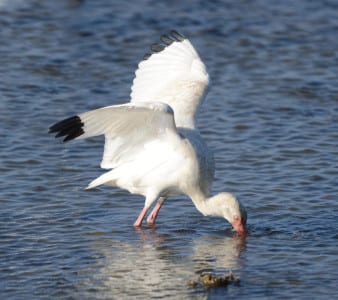
This White Ibis is probing in the oyster reef and he’s got his nictitating membrane over
his eyes to protect them against the sharp edges of these bivalves

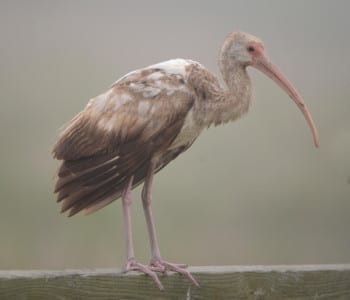
 Posted in
Posted in 
























